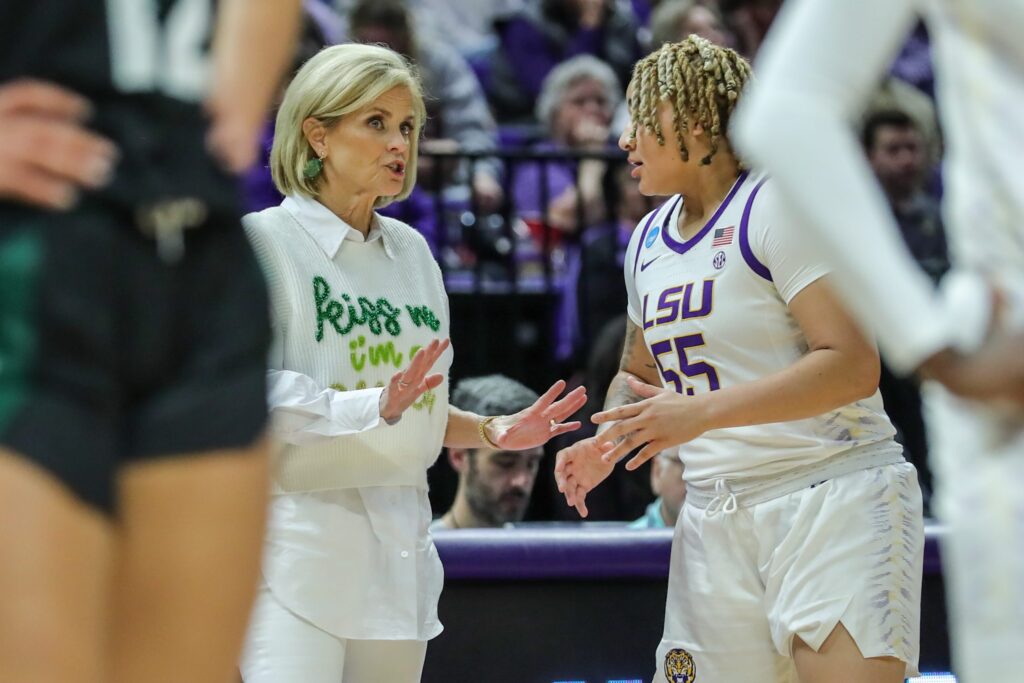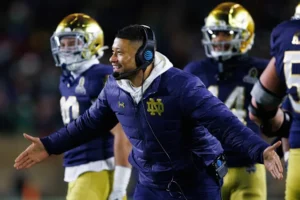
Two Former LSU Women’s Basketball Forwards Say They Want to Transfer to the SEC
The world of women’s college basketball has been witnessing a dramatic shift in recent years, as transfer portal activity becomes more frequent and impactful. Among the most intriguing developments is the recent news that two former LSU women’s basketball forwards have expressed their intention to transfer within the Southeastern Conference (SEC). This decision has ignited discussions among fans, analysts, and coaches alike, as the SEC continues to cement its dominance in the sport.
For these players, the decision to leave LSU and seek a new opportunity within the same conference speaks volumes about the competitiveness and volatility that exists within the landscape of college basketball today. Both of these athletes have displayed exceptional talent during their time at LSU, and their transfers to other SEC schools could have far-reaching consequences for their new teams and the conference as a whole. As the SEC remains one of the most fiercely competitive conferences in women’s basketball, the prospect of these players contributing to rival programs raises questions about the future power dynamics within the league.
This article will explore the background of the LSU women’s basketball program, the significance of the SEC in college basketball, the role of player transfers in modern sports, the profiles of the players involved, and what this shift means for both LSU and the SEC at large.
Louisiana State University (LSU) has long been a stronghold in NCAA women’s basketball. The Tigers have established themselves as one of the premier programs in the SEC and have consistently been a contender in the NCAA tournament. LSU boasts a rich history that includes several SEC titles, deep tournament runs, and notable individual performances by some of the game’s best players.
In recent seasons, LSU has been competitive, regularly making appearances in the NCAA Tournament and producing high-level talent that goes on to have professional careers in the WNBA. The program’s foundation has been built on strong recruiting, solid coaching, and a commitment to excellence. Under the leadership of head coach Kim Mulkey, who was hired in 2021, LSU has seen a resurgence in its efforts to reclaim its spot at the top of the SEC. Mulkey, a three-time NCAA champion at Baylor, has injected a new energy into the program, but her tenure has also brought new challenges—especially in terms of player turnover and ensuring that the program remains competitive.
It is against this backdrop that the two forwards, who were once vital components of LSU’s roster, have decided to seek new opportunities at other SEC schools. Their departure from LSU represents more than just a simple roster change—it speaks to the complex nature of college athletics in an era where athletes have more control over their futures and the ability to seek new challenges when they feel it’s in their best interest.
The SEC is widely regarded as one of the most competitive conferences in women’s college basketball. With powerhouse programs such as South Carolina, Tennessee, Kentucky, and Mississippi State, the SEC is a hotbed of talent and a breeding ground for some of the nation’s best teams. The conference has produced numerous NCAA champions, All-American athletes, and future WNBA stars.
South Carolina, in particular, has been a dominant force in recent years. Under head coach Dawn Staley, the Gamecocks have become a perennial contender for the national title, with multiple Final Four appearances and a national championship in 2017. Tennessee, with its storied history, remains one of the most successful programs in NCAA women’s basketball, consistently competing for SEC titles and national prominence.
LSU, despite its strong history, has found itself in a more challenging position in recent years. The team has faced tough competition from the SEC’s elite programs, and while LSU has made notable strides, the program has not been able to consistently challenge for conference titles like its SEC counterparts. The decision of these two players to leave LSU and transfer to other SEC schools speaks volumes about the level of competition within the conference. It’s clear that players believe that by transferring, they may have a better chance to compete for titles or gain more significant playing time in a new system.
The SEC’s high level of competition makes it an enticing destination for transfers. For these two players, the possibility of stepping into a new environment with established programs presents a unique opportunity to elevate their game further and compete at the highest level.
The rise of the transfer portal has significantly altered the landscape of college sports, and women’s basketball is no exception. The NCAA’s decision to grant athletes the ability to transfer once without having to sit out a year has opened the door for more player movement than ever before. The ability to switch schools has allowed athletes to seek better opportunities, find a program that fits their style of play, or join a team that offers a more favorable path to playing time and championships.
In women’s college basketball, high-profile transfers have become a regular part of the narrative. Players moving from one program to another has sparked excitement among fans and media, often reshaping the competitive balance within conferences. For example, the arrival of a star player from a smaller program to a powerhouse team can elevate the program’s chances of winning a national championship, while the departure of a player from a once-prominent team might leave a void that is hard to fill.
For the two LSU forwards in question, the decision to transfer within the SEC may be driven by several factors. One of the most common reasons for a player’s transfer is the desire for more playing time. At LSU, with a roster full of talented players, it’s possible that these athletes felt they could thrive more in a system where they would receive more minutes on the court. Additionally, the opportunity to play for a new coach, in a different system, or with a fresh set of teammates might have been an attractive prospect.
On the other hand, LSU’s rise under Coach Mulkey might also factor into the decision. With the program’s strong recruiting class and increasing competitiveness, some players may feel that their individual growth might be better supported in a different environment.
For the receiving teams, the addition of these two forwards could have a profound impact. If they find success in their new homes, these players could elevate their teams’ performance, making the SEC even more competitive.
[Player’s Name] came to LSU with high expectations and lived up to much of that potential. A standout forward with a versatile game, she contributed significantly to LSU’s frontcourt during her tenure. Known for her ability to score in the post and stretch the floor with mid-range jumpers, [Player’s Name] showcased her athleticism and toughness throughout her time at LSU.
Her decision to transfer has shocked many, especially given her integral role in LSU’s system. Sources close to the program suggest that she may be seeking a fresh start and an opportunity to prove herself in a new environment. Whether it’s to a team with a need for an experienced forward or a program where she can be the focal point of the offense, [Player’s Name] could make an immediate impact in the SEC.
Her leadership and scoring ability make her an attractive option for several SEC programs looking to bolster their forward positions. Her next stop will undoubtedly be a team where she can continue to develop her game while contributing to a championship contender.
[Player’s Name] was another key contributor for LSU. A dynamic forward with exceptional rebounding and defensive skills, she quickly became known for her relentless work ethic and ability to change the game on both ends of the floor. While she may not have been as much of an offensive powerhouse as her counterpart, [Player’s Name] brought grit and toughness to LSU’s frontline.
Her decision to transfer could stem from her desire for a bigger role offensively, or perhaps a shift in the team’s tactical direction that no longer aligned with her strengths. Regardless of the reason, [Player’s Name] will likely find success in the SEC, as her tenacity on defense and leadership will be invaluable to any program that recruits her.
Several SEC programs stand out as potential destinations for these two players. Schools like Alabama, Arkansas, and Mississippi State could all benefit from adding experienced forwards who bring a strong defensive presence and scoring ability.
Mississippi State, in particular, has been a perennial contender in the SEC and could use the added depth to its forward rotation. Likewise, Arkansas, with its up-tempo style of play, could provide a system where both players could thrive in an offense that focuses on fast breaks and high-scoring games. Alabama, another rising program in the SEC, would likely welcome players of this caliber as they continue their push toward relevance in the conference.
These programs, along with others, could make a strong case for why transferring to their schools would be the best move for these two players.
The news of these two forwards leaving LSU has generated significant attention in the basketball world. Fans of LSU have expressed a mix of disappointment and concern, wondering if the departures are a sign of internal struggles or simply a matter of individual players seeking new opportunities. Meanwhile, fans of SEC rivals have begun to speculate about how these players will fit into their respective teams, with many excited about the prospect of their new programs gaining such talented individuals.
Media outlets covering women’s basketball have been quick to analyze the transfers, with experts weighing in on the potential effects these moves could have on the SEC standings in the coming seasons. With both players expected to contribute immediately, their new teams will be closely monitored as they make their push for conference and national titles.
The transfer of two former LSU women’s basketball forwards to rival SEC programs is a development that will have significant repercussions for both LSU and the SEC. As the players seek new opportunities, they will likely find themselves in high-pressure situations, where their abilities will be tested against some of the best teams in the country. For LSU, these departures may leave gaps that will need to be filled, but Coach Kim Mulkey’s track record of building strong teams suggests that the Tigers will continue to compete at a high level.
The SEC, already one of the most competitive conferences in women’s basketball, will only grow more intriguing with the addition of these talented forwards to rival programs. Fans, analysts, and coaches alike will be watching closely as the next chapter of college basketball unfolds, with the balance of power in the SEC potentially shifting with every game.





